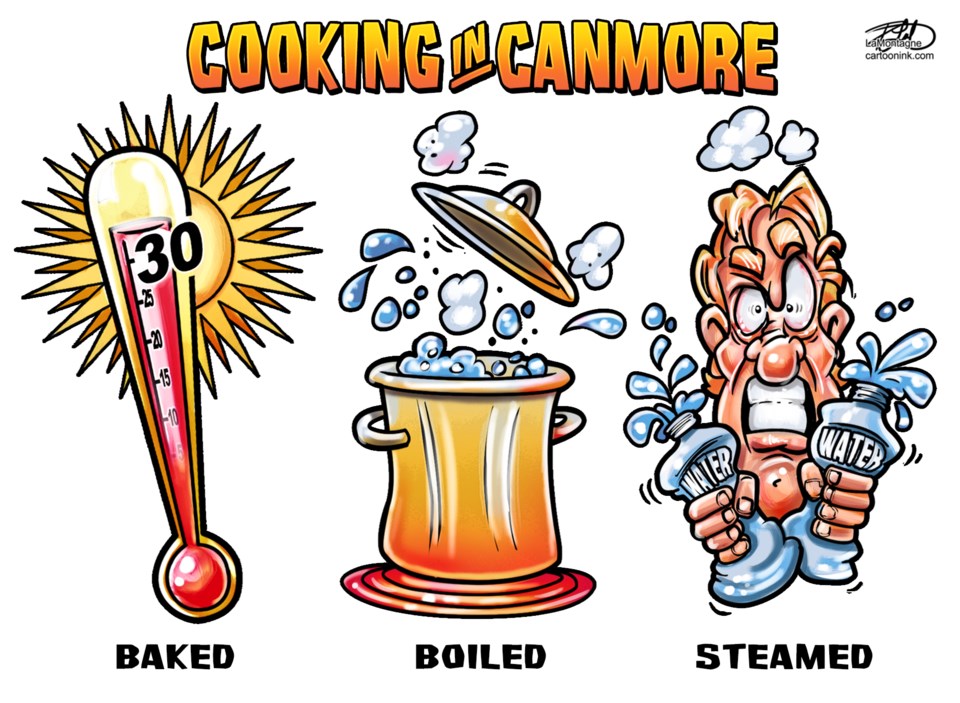COVID-19, wildfires, record heat temperatures and now a boil water advisory – the summer has been unrelenting for much of the Bow Valley.
The boil water advisory was unlikely foreseen by anyone in the Canmore-area as much of the town was without safe drinking water for the entirety of the long weekend.
The timing may have been the worst, with visitors flocking to the valley for the second last long weekend of the summer. As water lines were necessarily flushed, several businesses were forced to temporarily close for further insult to injury over a brutal year-and-a-half of the pandemic.
The last boil water advisory for Canmore came following the 2013 floods, showing the rareness of such advisories for the region.
However, it’s easy to forget what we take for granted as tap water has been a luxury for only the past 100 or so years for most Canadians.
There’s still an average of 500 boil water advisories a year in Canada, though most last only a matter of hours or fewer than a handful of days.
The Town and EPCOR’s initial communications were a source of anger for some in the region. However, their work ultimately included multiple updates a day, detailed information and an interactive map showing the impacted and safe regions.
Several potable water trucks were brought in as bottled water flew off the shelves. Friends, families and neighbours also assisted one another as parts of the town regained safe water access sooner than others.
The comparison of the boil water advisory and the impact many First Nations communities face has not been lost for many.
It was only on July 30 the federal government reached in principle an almost $8-billion settlement with First Nations who had launched a class-action lawsuit on the lack of clean and safe drinking water in their communities.
Launched by the Curve Lake First Nation and Neskantaga First Nation in Ontario and the Tataskweyak Cree Nation in Manitoba, it alleged Canada violated its obligations to First Nations by not ensuring clean water reached reserves.
In 2015, Prime Minister Justin Trudeau promised to lift all drinking water advisories on First Nations by this year. While 108 have been lifted, there are still 51 long-term advisories in 32 communities as of June 16, according to Indigenous Services Canada.
The Neskantaga First Nation in Ontario has had a boil water advisory since 1995, while Shoal Lake No. 40 First Nation had one from 1997 until earlier this year, leading to a generation boiling their tap water before consuming.
The most well known advisory – the Walkerton E. coli outbreak in 2000 – led to more than 2,000 confirmed cases and six deaths as well as dozens of people having severe health impacts since. The subsequent inquiry led to recommendations for stricter water treatment guidelines.
Canadian water quality has ranked among the best in the world – second only to Sweden in the 2010 Environmental Performance Index – as the United Nations stipulates the right to water is a basic human right.
Despite this, First Nations communities face a 26 times higher than the national average of water-borne diseases, according to a 2016 research paper for the International Journal of Environmental Research and Public Health.
The same paper found people living on reserves are 90 times more likely to have no access to running water when compared to non-Indigenous people.
The national assessment on water and wastewater systems in First Nations communities found 29 per cent of the 740 water systems had a potential high risk that could negatively impact water quality, while 13.5 per cent of First Nations had trucked-in water and 1.5 per cent had no water at all.
Though the situation has improved, it’s been a slow process.
Many of the First Nations communities are remote, but several close to urban locations – such as the Tsuut’ina First Nation near Calgary and Oneida-of-the-Thames outside of London, Ont. – also have water quality issues.
What the Canmore-area experienced was a nuisance compared to what many First Nations experience on a daily basis.




